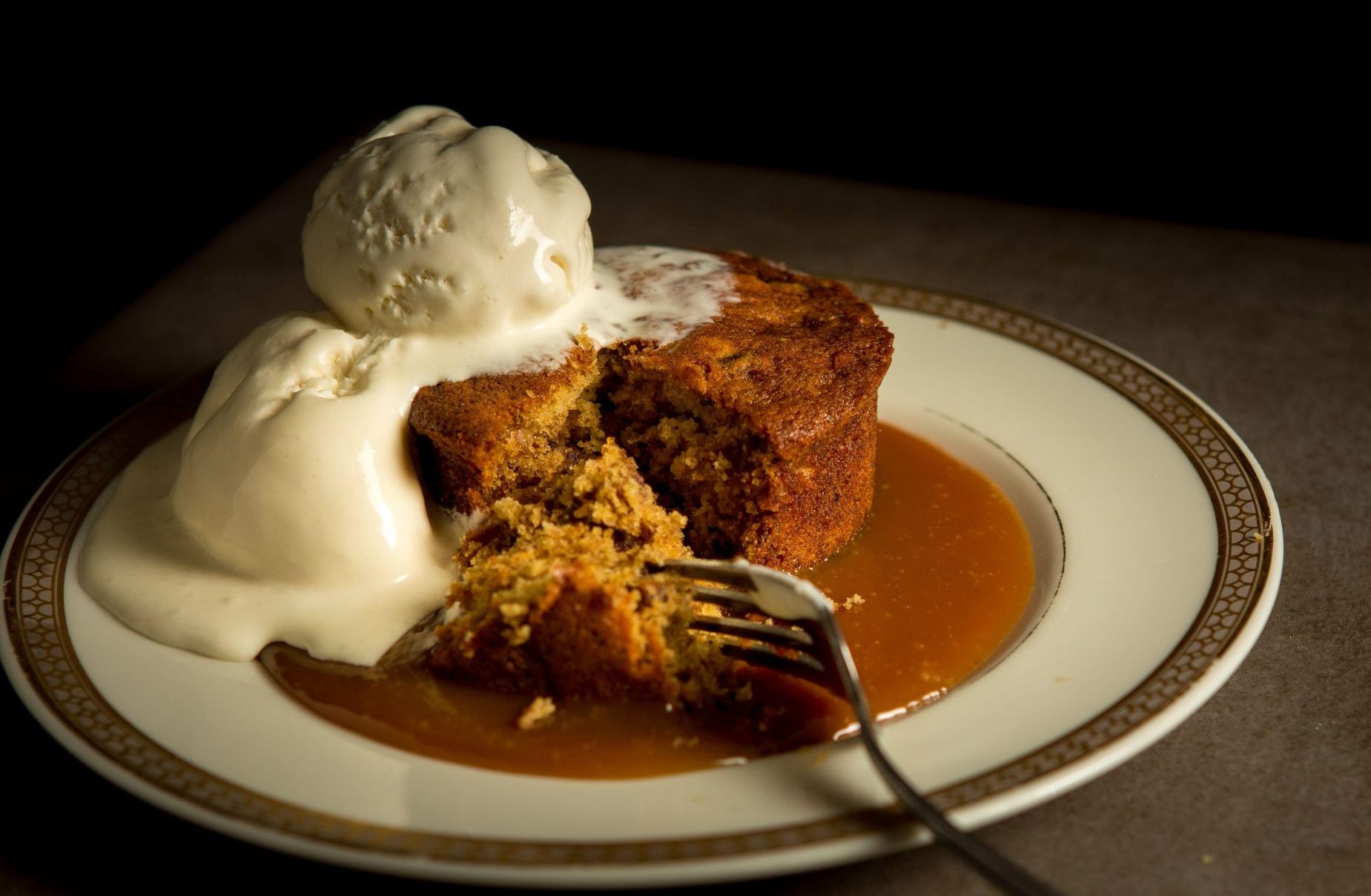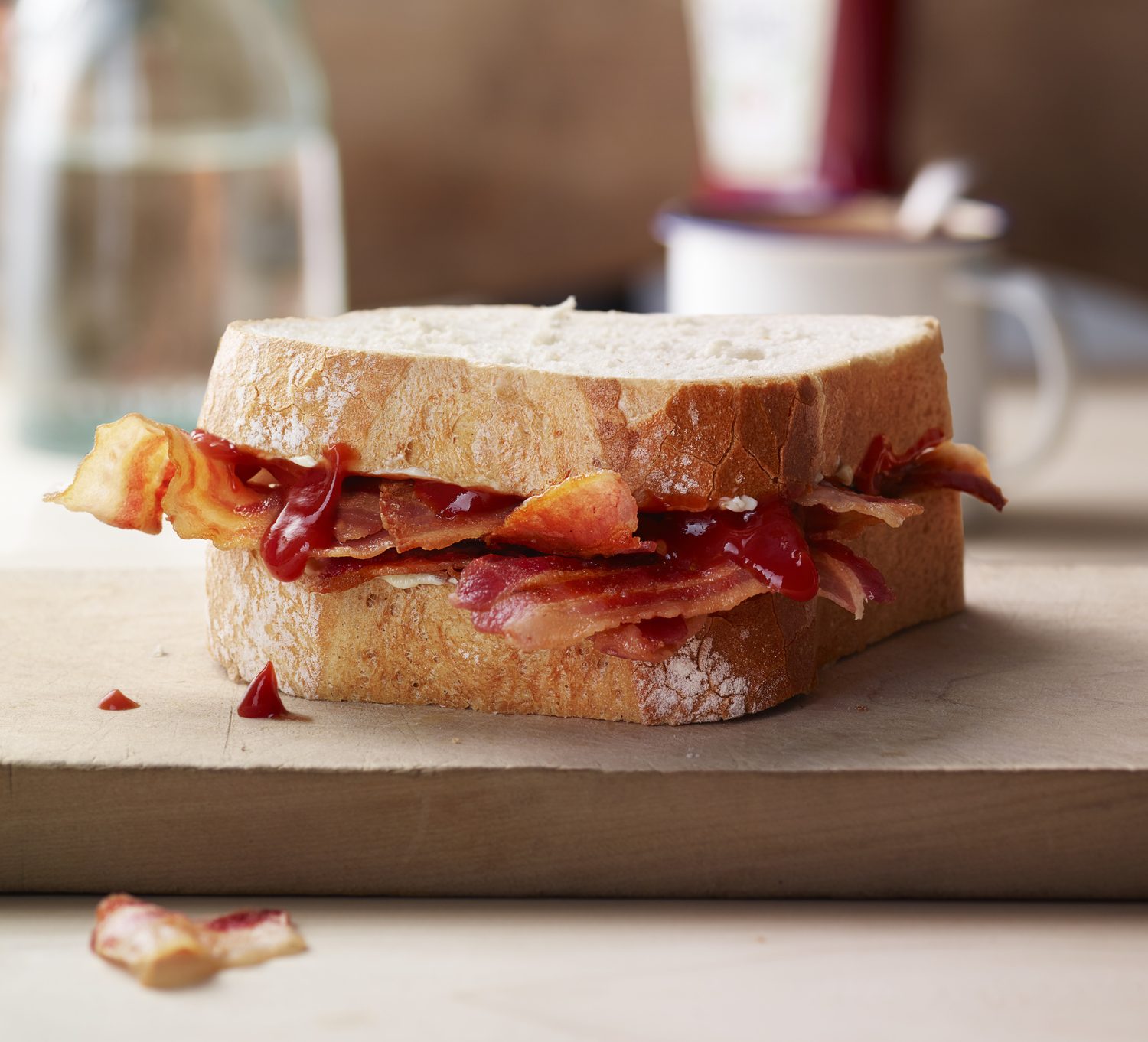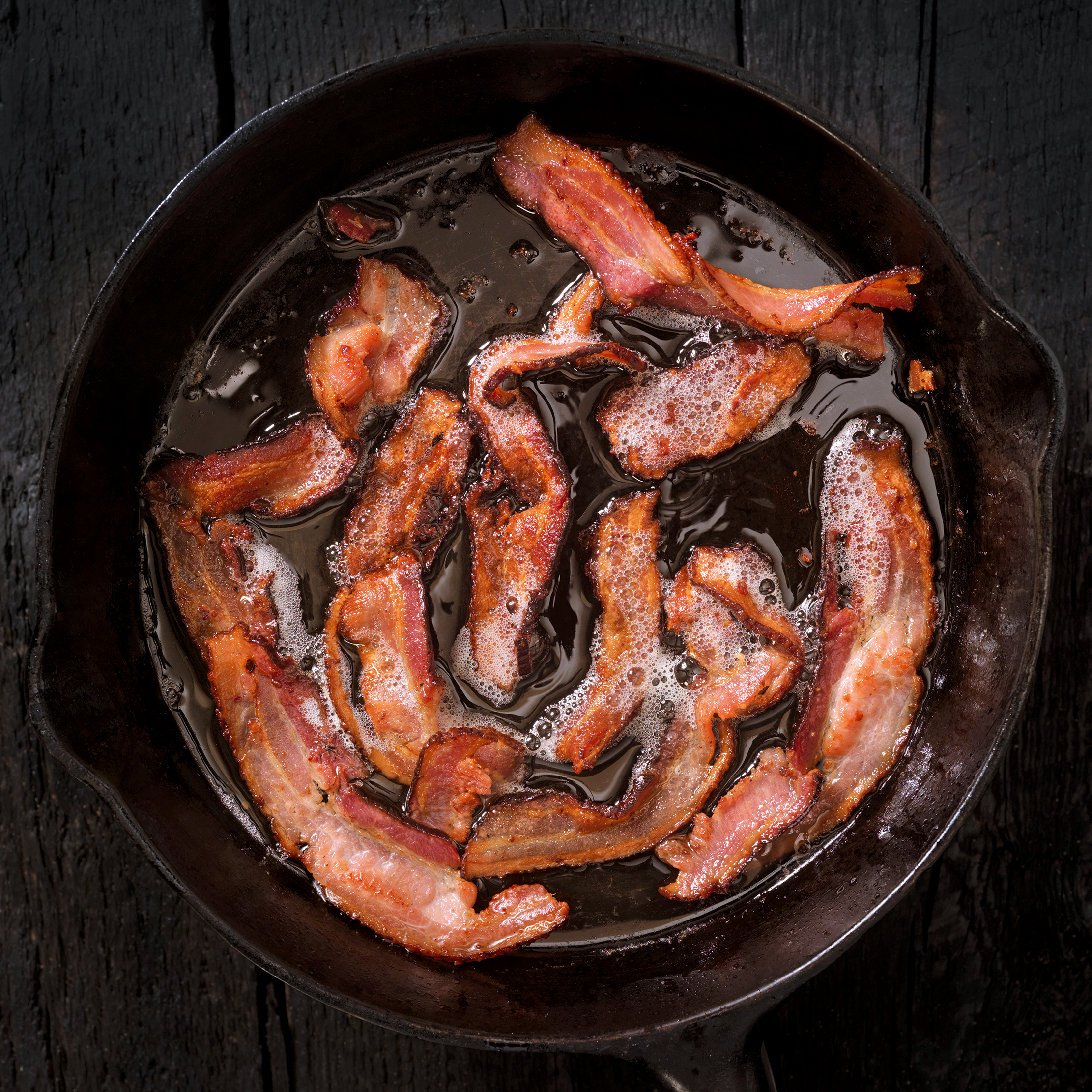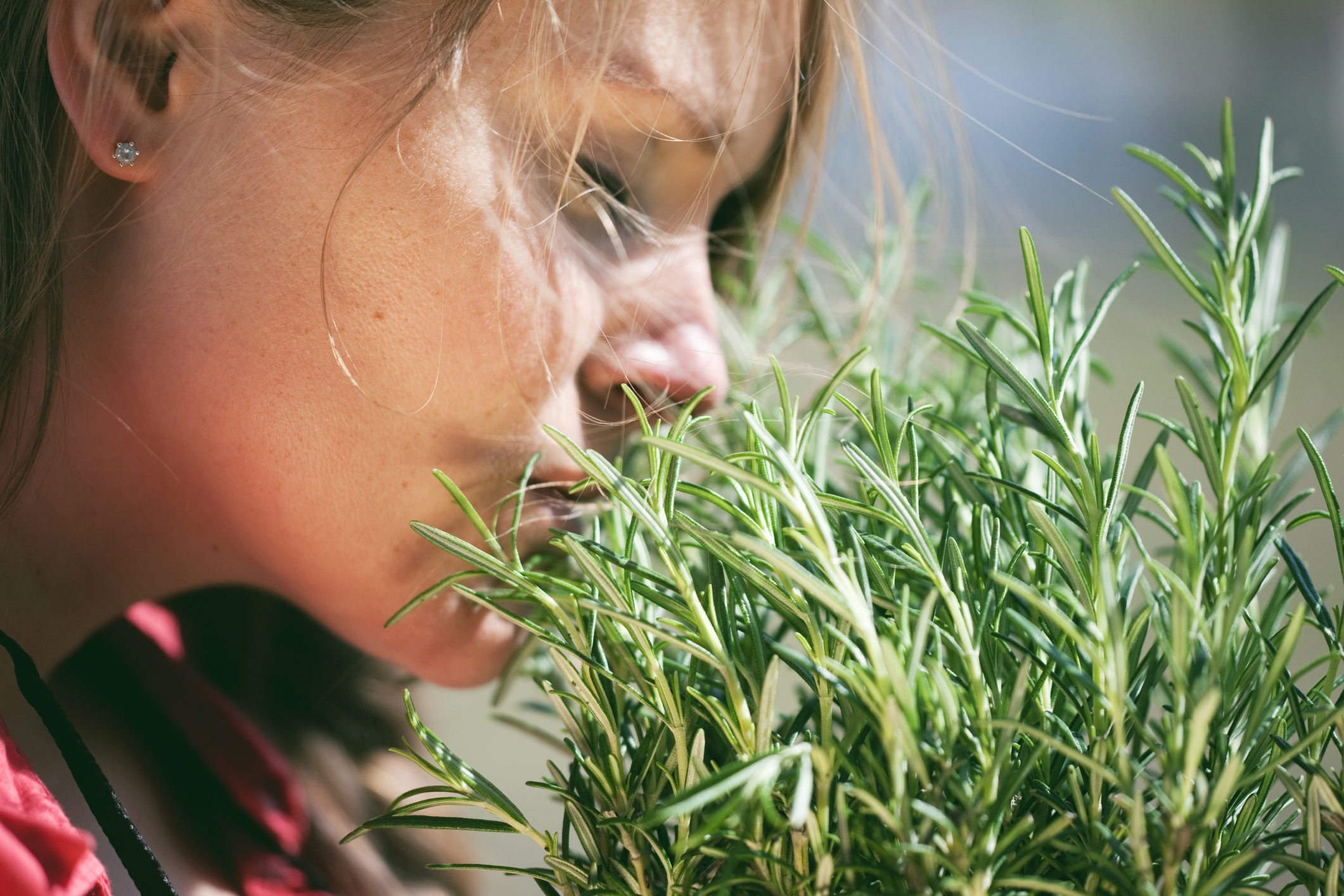Tom Parker Bowles: Eating seasonally in October... including a showstopping sticky toffee apple pudding
The chef and food writer shares his tips on eating seasonally in October as the nights draw in.


Summer is, by now, a distant memory and tumblers of rosé have become glasses of red. Coats appear from cupboards, fires are lit and one starts to grapple with the big question of the day: is it too early to turn on the heating?
But this is why we love the British seasons so — that gradual change from light to dark, warm to cold, salad to stew. The vegetable garden is getting ready for the frosts and the brassicas are all in. Things in the kitchen get a bit more slow, with the old Le Creuset pulled from its usual summer, back-of-cupboard exile and promoted once more to the big time.
Yet it’s not quite winter. The apples are at their very best and we have more than 3,000 varieties. Of these, we seem to eat about two: the ever-dreary Pink Lady (usually imported) and Golden Delicious. It’s worth seeking out other types, both sweet (Evelina, Cameo) and sharp (Bramley’s Seedling, Calvilles), or a mixture of both (Cox’s Orange Pippin). Eaters and cookers (Bramley) can be used in dishes both sweet and savoury.
Apple sauce is a kitchen essential, as good with pork chops as it is with ice cream, just as pork fillet with cream and apples is a Normandy classic. Florence White, in Good Things in England, has a recipe for apple pie, ‘one of our oldest English dishes’. Food writer P. Morton Shand was a fan. ‘English apple pie is of rare merit when achieved by a true cook,’ he thundered, ‘which is not too often.’ There are endless puddings, dumplings, strudels, fritters, purées and tarts. Pears, still very much around, are equally versatile.
Leeks, cabbage, rainbow chard, kale and purple-sprouting broccoli — as well as the maincrop potatoes, parsnips, swedes and turnips — are all flourishing. So, too, are the pumpkins and gourds, although they still fail to move me. Sorry, but I have tried. I suppose a decent pumpkin soup can be passable and braised butternut, too, but you can’t love everything, so I’ll leave the adoration to you.
What’s in season in October
Apples; beetroot; bilberries; blackberries; broccoli; butternut squash; celeriac; celery; chestnuts; chicory; clams; cob nuts; crab; Dover sole; duck; elderberries; goose; grouse; hare; herring; horseradish; Jerusalem artichoke; kale; kohlrabi; leeks; mackerel; mallard; medlar; mussels; oysters; parsnips; partridge; pears; pheasant; potatoes (maincrop); pumpkin; quince; rabbit; red mullet; salsify; swede; sweetcorn; truffles (white); turnips; venison; walnuts; watercress; wild mushrooms
What I do love are sloes, at best after the first frost, when the skins have softened and ‘bletted’ (become a touch rotten). They’re as mouth-puckeringly sour when raw as you could imagine — inedibly so. Freeze them overnight, then put into a sterilised jar with half the weight of sugar (so 500g of sloes need 250g sugar) and 70cl of gin or vodka. Keep in a dark place, giving the jar a gentle turn every day for the first week. Two months later, sloe heaven awaits.
Exquisite houses, the beauty of Nature, and how to get the most from your life, straight to your inbox.
Walnuts are ready to harvest. Remove the green hull (wearing rubber gloves, as phenols in the hull can irritate as well as stain), wash and dry carefully, then spread out in a thin layer in a dry room. They should take no longer than three or four days to be ready to crack and eat.
Pheasant is now in season and, although it’s a lean bird and can tend to dryness, we should treat it with a little more respect. Try cooking in the Normandy style, with butter, Cox’s apples, cream — both double and soured — plus a big slug of Calvados.
As winter draws on and the freezer fills up, you may get bored of the bird. But worry not, as it can be transformed into a stock, a casserole or a curry. If you are going to shoot, you must always take a brace and eat them, too. Seasonal eating is not all about the sexy superstars, but the lesser players as well. Every ingredient has its place. Even, I suppose, that dull old pumpkin.
Recipe: Sticky toffee-apple pudding
The late Gary Rhodes was a great British chef and, although classically French trained, was an early cheerleader for traditional British food at a time when it was very much out of vogue.
He was also one hell of a talented cook. This recipe, from New British Classics, is autumnal to its core and is best served, as all great puddings invariably are, with custard, double cream or vanilla ice cream.
Ingredients
Serves 6
For the suet pastry
- 175g self-raising flour
- Pinch of salt
- 75g beef or vegetable suet
- 150ml water or milk
- 50g unsalted butter
- 25g–50g dark, soft, brown sugar
For the filling
- 675g Bramley apples, peeled and quartered
- 50g butter
- 75g light, soft, brown sugar
- 2–3tbspn lemon juice
Method
To make the pastry, sift together the flour and salt. Add the suet, stirring in the water or milk. The dough can now be worked and mixed, creating a smooth consistency. Wrap and rest for 20 minutes.
Spread the butter around a 900ml (1½ pint) pudding basin and sprinkle with the dark-brown sugar. The more sprinkled, the stronger the toffee flavour will be. Roll out three-quarters of the pastry and line the basin.
Halve the apple quarters once more, into eight slices per apple. These can be halved to shape into rough chunks.
Melt the butter. Once bubbling, add the apples and cook for 1–2 minutes. Add the sugar and lemon juice and remove from the stove. Leave to cool, then spoon the apples into the basin.
Roll the remaining quarter of the pastry and place on top of the pudding, sealing the edges well. This can be covered with folded greaseproof paper and foil and tied with string if necessary. Steam over boiling water for 1½–1¾ hours, topping up the hot water if needed.
Once cooked, remove from the steamer and rest for five minutes, before carefully turning out.

Tom Parker Bowles on the perfect bacon sandwich
Sizzling, crispy and irresistibly pork-scented bacon all starts with a well-reared traditional breed of pig and a slow, careful curing

Credit: Lauri Patterson / Getty
Britain's best bacon: Tom Parker Bowles picks the nation's best producers
Last week, Tom Parker Bowles waxed lyrical about the joys of bacon, and the perfect bacon sandwich. But where to

Credit: Getty Images
Curious Questions: Why is smell the most evocative of our senses, 'primal, unconscious and instantaneous, capable of stopping a person dead in their tracks'?
Tom Parker Bowles delves into the mysteries of our ability to smell — and ponders what is the best smell of
Tom Parker Bowles is food writer, critic and regular contributor to Country Life.
-
 What is everyone talking about this week: Thanks to modern-day technology, people were far happier in the days when Nero was setting Rome ablaze
What is everyone talking about this week: Thanks to modern-day technology, people were far happier in the days when Nero was setting Rome ablazeWas the ancient world's superior happiness down to its ‘superior production of art’?
-
 A slick looking off-roader that's a far cry from its rustic rural roots — Volvo EX30 Cross Country
A slick looking off-roader that's a far cry from its rustic rural roots — Volvo EX30 Cross CountryThe latest iteration of Volvo's Cross Country is flashy, fast and stylish. But is that what a Volvo Cross Country is supposed to be?
